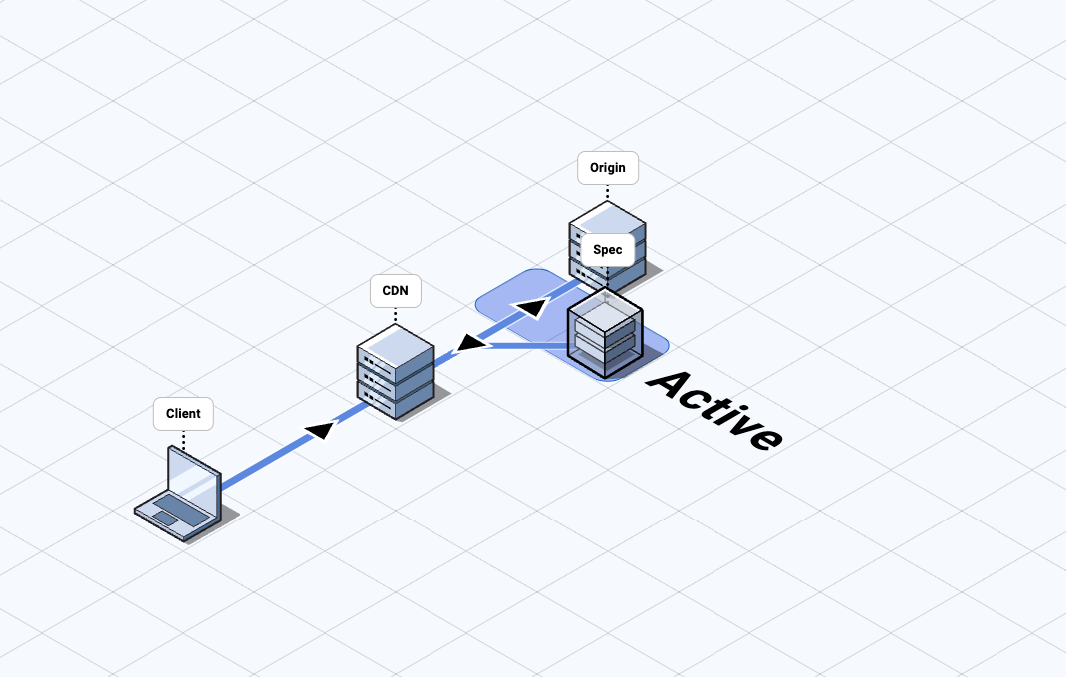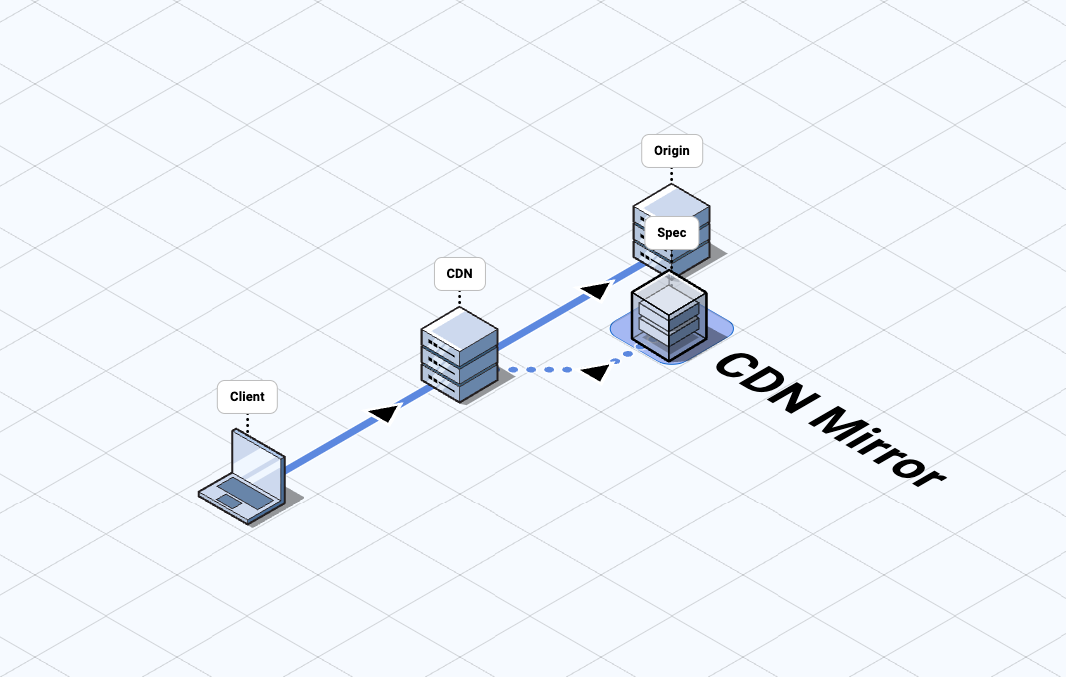Processing Modes
The Spec Platform can run in three processing modes:
Pass-through
- All traffic streams unbuffered through a Spec region. Spec copies data and
generates events based on requests and responses.
- Traversing a Spec region in pass-through has a <1 ms p95 latency.


Active
- Most traffic (usually > 99%) streams unbuffered through the Spec network. Spec
copies data and generates events based on requests and responses.
- Traversing a Spec region in active mode has a <1 ms p95 latency.
- Specific routes where Spec may take realtime enforcement action will be
processed synchronously. The most common usage includes requests that
represent authorization attempts, payment attempts, or account updates. These
usually account for less than < 1% of all traffic.
- Synchronous processing has a <20ms p95 latency on these targeted requests, but customers can configure workflows that trigger synchronous integrations that would add their round trip time to this processing.


CDN Mirror
- The customer configures an external mirror to forward requests to a Spec
region, where the mirrored requests are terminated.
- Sending requests to Spec this way is typically done at the CDN and is subject to the performance and limitations of that CDN's request mirroring capability.


Comparison of Processing Modes
The table below outlines the capabilities, considerations, and deployment tasks associated with each processing mode:
| Pass-through | Active | CDN Mirror | |
|---|---|---|---|
| Events Available |
|
|
|
| Actions Available |
|
|
|
| Network Updates |
|
|
|
| Availability Features |
|
|
|
| Connection Methods |
|
|
|
Note:
- Some platforms impose Service Worker implementations that may not be appropriate for your application.